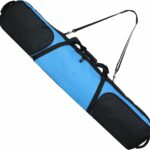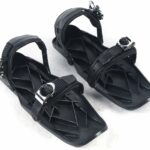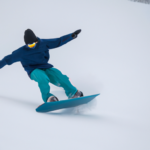So, you’ve mastered the basics of snowboarding and you’re ready to take it to the next level. Great! The article you’re about to read explores “How To Hit A Jump On A Snowboard”. It’s packed with practical tips and sound advice that will guide you smoothly from preparation to execution as your board leaves the snow and soars through the air. Whether you’re an adrenaline junkie eager to impress or you simply want to up your game, this is the perfect read for you.
Understanding Snowboarding Basics
Keep in mind, snowboarding is a thrill-filled sport, but it doesn’t come without a learning curve. Your progression begins with educating yourself about the basics. Let’s start on that journey with you.
Knowing Your Snowboard
It’s not just a pretty piece of sports equipment, knowing your snowboard mean understanding the technology within it that lets you fly down slopes and leap over jumps. You should familiarize yourself with a few key parts: the nose (front) and tail, the edges (for turning), and the bindings (where your feet go). Each type of snowboarding, like freestyle or alpine, uses a different shape and length of the board, so ensure you’re using the right type for your style or goal.
Understanding Snowboard Stance
Your snowboard stance comes down to two basics: the lead foot and the position of your feet. For starters, if you’re left foot forward, you’re a “regular.” Right foot forward? You’re “goofy.” Neither is better, it’s all about what feels comfortable to you. The positioning and angle of your feet on the snowboard also play significant roles in maintaining balance and controlling your movements.
Learning Basic Riding Techniques
Now that you’re strapped in and feeling comfortable, let’s get moving. Initially, you’ll want to practice ‘skating’ on flat terrain – this is simply pushing along with your back foot free from its binding. Next is ‘gliding’, which involves taking small slopes with your back foot still out. As your confidence builds, you’ll need to then master the basic movements of ‘heel edge’ and ‘toe edge’ turns.
Preparing for the Jump
Hitting a jump is about careful preparation as much as it is about actual execution. Never take a leap without doing your homework on the terrain and snow quality first.
Scouting the Terrain
It’s a smart move to do a few ride-throughs before you take the leap, literally. Scouting the terrain means understanding its shape, the takeoff, and the landing. Look for any obstacles, and figure out the best line for your jump.
Assessing the Snow Quality
Snow quality can greatly affect your jump. Hard, icy conditions might make your jump and landing a bit tricky as your board could slip, while powder snow makes for a softer landing but can slow your run.
Choosing the Right Jump
Not all jumps are built the same. Making the right choice means considering the size as well as the shape – kickers and table tops are just two types to consider. Start with smaller and simpler ramps before tackling larger and complex jumps.
Visualizing the Jump
Before you actually try the jump, visualize it. This is a strategy used by athletes worldwide to improve performance. Close your eyes and imagine yourself successfully executing the jump from start to finish.
Pre-Jump Confidence Building
Facing a jump can seem quite daunting at first but building confidence is key. Here’s how.
Practising on Smaller Jumps
Start small before you go big. Practising on smaller jumps allows you to build confidence and develop your technique before attempting bigger, more advanced jumps.
Work on Your Speed Control
With jumping, speed is imperative. Too slow, and you won’t clear the jump. Too fast, and you risk overshooting your landing. Try to work consistently on controlling your speed before attempting a jump.
Improving Body Balance
Balance is equally crucial as speed when it comes to jumps. The right body balance techniques will assure that you stay on your snowboard throughout the jump and landing. Do balance exercises and try to stay centred on your board at all times.
Approaching the Jump
Perfecting your approach to the jump can greatly enhance your leap and resulting landing. The right speed, body position and timing work hand in hand here.
Maintaining the Right Speed
You want just the right speed; too fast or too slow can both hinder your jump. Your approach speed should be based on your comfort level, the size of the jump, and the conditions that day.
Setting Your Body Position
As you approach, get low and forward on your board. Your weight should be centred, knees slightly bent.
Timing Your Approach
Start to move upwards into a standing position as you approach the edge of the take-off ramp. This will help to provide the momentum you need to get into the air.
Executing the Jump
Your moment of adrenaline! The jump is all about popping off the lip, maintaining a good body position in the air and, of course, styling it up.
Pop and Pull Technique
When jumping, use the ‘pop and pull’ technique. This means springing with both legs evenly as you leave the lip of the jump (that’s the ‘pop’), while lifting your knees up toward your chest (the ‘pull’).
Body Position in the Air
Keep your body compact in the air by pulling your knees up and aiming to stay as level as possible. Relax and let your snowboard do the job it’s supposed to do.
Styling Your Jump
Now, let’s add style to your jump! Try adding grabs or tweaks while you’re in the air. But remember the golden rule – only start styling your jumps when you’ve mastered the basics.
Landing the Jump
Arguably the most critical part of the whole jumping process is the landing. A good landing means a successful jump.
Spotting Your Landing
By ‘spotting’, we mean looking for your landing. This provides anticipation cues for your body to adjust in order to make the smooth transition back to the snow.
Adjusting Your Body for Landing
As you come down, start to extend your legs and aim to land with your board flat. Your knees should be bent to absorb the landing.
Absorbing the Impact
Bend your knees and hips when landing to absorb the impact. This will minimise the chance of injury and improve your ability to ride away smoothly.
Mistakes to Avoid
Learning from your mistakes is crucial. Here are a few common ones to be aware of when practicing jumps.
Leaning Too Far Forward or backward
Leaning too far forward or backward on takeoff can cause you to lose balance mid-air or upon landing. You should aim to remain centred over your board at all times during the jump.
Not Popping at the Right Time
Popping too early or too late will affect your trajectory and can throw off your whole jump. Practice timing your pop to make sure it coincides with the end of the jump lip.
Lack of Speed Control
Lack of speed control is often an issue. As mentioned earlier, going either too fast or too slow into a jump can negatively affect the outcome of your jump.
Safety Precautions When Jumping
Before you launch into attempting jumps, take the necessary safety precautions first. Your safety is paramount.
Wearing Appropriate Safety Gear
Helmets, wrist guards, and padding are all crucial pieces of safety gear that can provide protection. Always ensure you’re appropriately kitted out to minimise the risks involved with jumping.
Having a Spotter
A spotter is essentially a friend who will watch you whilst you’re performing a jump. They help keep you safe by warning you of potential hazards and will be there if you need help after a rough landing.
Checking Weather Conditions
Hazardous weather conditions can make jumps more risky and should be avoided. Frozen or wet conditions are generally unfavourable, as they can create slippery surfaces and poor visibility.
Advanced Jump Techniques
Once you’ve mastered the basics, it’s time to learn some advanced techniques. But remember, each of these still needs plenty of practice to perfect.
Mastering Spin Jumps
Spin jumps involve rotating your body as you’re in the air. It takes a lot of coordination and control and is normally attempted once you’re comfortable with basic jumping techniques.
Practicing Grab Jumps
Grab jumps include reaching down mid-air and grabbing your snowboard. This adds style to your jumps and can give you extra air points!
Learning Flip Jumps
Flip jumps, as the name suggests, involve flipping in the air. This is an advanced technique that should only be attempted once you’ve mastered other jumps.
Continued Practice and Progression
Becoming a pro at snowboarding jumps doesn’t happen overnight. Keep working on your technique and always set new goals to keep progressing.
Increasing Jump Height
Once you are comfortable with all the basics and have some successful jumps under your belt, you can start to build your jump height. Gradually increase the height of the jumps you attempt so you don’t overwhelm yourself.
Experimenting with Different Jumps
Try different types of jumps to challenge yourself and build your skills. Each jump type will require a slightly different approach and landing.
Staying Motivated
Like any sport, staying motivated in snowboarding is key. Always set new goals and push yourself to achieve them. Celebrate your achievements and ride with friends. Most importantly, remember to enjoy the experience!
Snowboarding jumps are a rush like no other. Remember to take your time learning, always prioritize safety and most of all, have fun out on the slopes. Happy snowboarding!
- What Snowboard Bindings Should I Get? - January 23, 2024
- What Size Screws For Snowboard Bindings? - January 23, 2024
- How To Snowmobile On Water? - January 23, 2024










